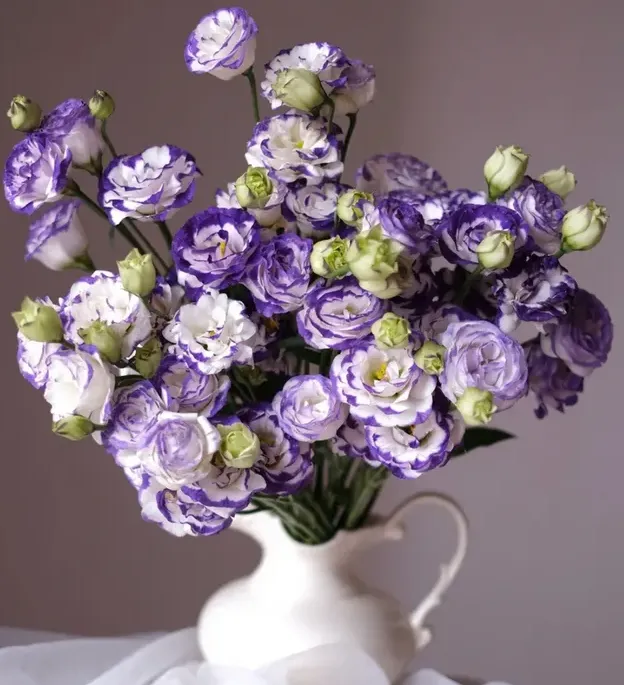









Purple-edged Lisianthus
Regular price $16.99 Sale price $8.99 Save $8.00
🎁💐Don't forget to get some for your family and friends as it's a unique gift idea.
🛒 Payments Via PayPal® and CreditCard
💵The merchant deposit of USD 100,000 has been paid to PayPal. has been paid to PayPal.



| Common Name | Lisianthus, prairie gentian, bluebell gentian |
| Botanical Name | Eustoma russellianum (prev. Eustoma grandiflorum) |
| Family | Gentianaceae |
| Plant Type | Herbaceous, perennial, annual |
| Mature Size | 1–3 ft. tall, 6–12 in. wide |
| Sun Exposure | Full |
| Soil Type | Moist, well-drained soil |
| Soil pH | Neutral |
| Bloom Time | Summer, fall |
| Flower Color | Purple, pink, white |
| Hardiness Zones | 8–10 (USDA) |
| Native Area | Northern America |

How to Grow🌱
Starting lisianthus from seeds is a long, drawn-out process best tackled by serious gardeners. Lisianthus seeds are very small—barely larger than dust particles—so growing plants from seeds is impractical. When purchased commercially, lisianthus seeds are often prepared in the pelleted form to make them easier to handle. In cold-winter zones, start the seeds indoors in late fall. In warm-winter perennial zones, you can plant lisianthus seeds directly in the garden in late summer.
For indoor seed starting, use trays or small pots filled with a porous seed-starter mix (fine peat moss plus fine vermiculite). Moisten the potting mix and sow the lisianthus seeds on the surface. Cover the tray or container with a plastic dome or clear plastic bag and set it under grow lights (seeds need 16 hours of light per day to germinate and sprout). For the next two weeks, carefully monitor the temperature and keep it between 70 and 75 degrees Fahrenheit.
When seedlings appear, remove the covering and lower the grow lights to just above the seedlings. Seedlings can tolerate temperatures that fluctuate slightly but keep it between 60 degrees and 75 degrees Fahrenheit. Continue growing the seedlings, ensuring the growing medium stays moist but not soggy. Feed with a general-purpose fertilizer diluted to half-strength each week.
After seven or eight weeks, each developed seedling can be transplanted into a container filled with potting mix. As you grow the seedlings, ensure temperatures do not exceed 75 degrees, or you risk sending the plants into a dormancy phase (known as "rosetting").
Several months later, as spring arrives, your seedlings should be about 4 inches tall and can be hardened off with increasingly long visits to the outdoors over a week or so until they are toughened up for planting in the garden. However, don't plant until all danger of frost has passed.

PayPal is welcomed here.
If you want to checkout with Credit Card. Please Click Paypal and Search for ‘Pay with Debit or Credit Card'


